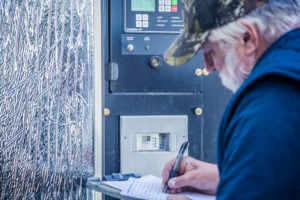Transfer switch: what is it and why is it important?
A transfer switch is the heart of any backup power system. It detects power failures, initiates an alternative source of power, carries and transfers power from both utility and the backup power source, and withstands and closes-in on fault currents. The transfer switch works seven days a week, 24 hours a day, 365 days a year to carry normal and emergency power to the load. It continuously operates under these conditions for 20 – 40 years whereas the generator only provides power during an emergency period. “[The transfer switch] is without a doubt the most critical component in the power distribution system for this reason.” (EGSA On-Site Power Generation, Fifth Edition).
Regular testing of an emergency power system is vital. During regular testing, problems can be identified that would otherwise cause malfunction during an actual power failure. Industry standards recommend testing emergency power systems under conditions that simulate an actual power outage as systems operate differently when put under building load than without. Recommended testing is under building load for at least one-half hour once a month. NFPA requires testing of diesel generators to be performed with a load at least 30% of the nameplate rating of the generator set.
“There were 92 blackouts recorded in the US between 2001 and 2005. Records show that during those blackouts, facilities that followed regular programs for preventative maintenance had little, if any, difficulty when those blackouts occurred, while many of those who did not had major problems. Some even had complete system failures” (EGSA On-Site Power Generation, Fifth Edition).
Recommended Preventative Maintenance
Most malfunctions in automatic transfer switches are caused by dust, dirt, and moisture. The best preventative maintenance procedure removes all of these. A vacuum is used to remove dust and dirt; a small source of heat is used to remove moisture. Testing of contacts, communication within the emergency power system, and power transfer is also performed during a preventative maintenance visit.
Preventative maintenance procedures for transfer switches do not include consumable parts, however replacement parts should be stocked at all times, specifically if emergency power system loads are critical. The most important takeaway is that a preventative maintenance program should be comprehensive enough to minimize the probability of a major malfunction in the emergency power system when you need it most.

We have been performing transfer switch maintenance for decades. Automatic Transfer Switch (ATS) preventative maintenance services may be added to any generator maintenance agreement or as a standalone contract. If more than one ATS supports your emergency backup power equipment, we recommend annual Preventative Maintenance service for each one. For more information, please contact us at 800-253-6617 or sales@fmgenerator.com. We can also be found online at www.fmgenerator.com.